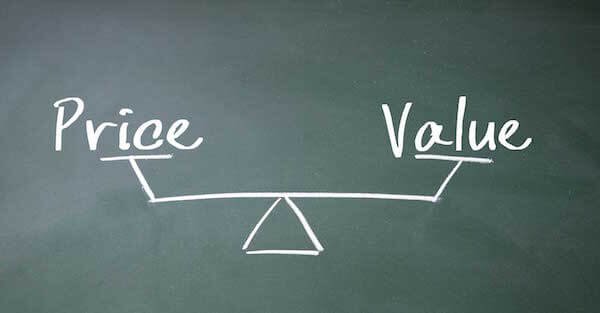Last night I was checking out tickets for some upcoming travel.
I’ll be headed to Colombia soon to check on the progress of a large cannabis investment we’ve made there, then off to Miami for an event with our Total Access members.
After that it’s Puerto Rico to meet with some officials there and check out some exciting investment opportunities on the island.
And then finally back to Asia where we’re setting up a new factory for a business I recently acquired.
So you can imagine my pleasant surprise when I found a ticket for all that travel for just $2800– in business class.
That’s an unbelievable deal; just last month I had a similar itinerary that cost me more than $10,000. So I couldn’t believe my luck.
Hey, who doesn’t like a great bargain?
It’s in our nature as human beings. Whether we’re purchasing a new car, shopping at a ‘Going out of Business’ sale, or planning a vacation, we always feel great when we get a steep discount.
Except, of course, when it comes to investing.
For whatever reason, our ‘value gene’ switches off when it’s time to invest our hard earned savings.
Rather than buy the highest quality assets at the lowest possible prices, people tend to pile into expensive, popular investments that they don’t really understand.
This is clearly not a great strategy to become wealthy… or to stay that way.
I doubt anyone would feel particularly smart if they consistently bought outrageously priced, full-fare plane tickets.
But that’s exactly what people are doing when they buy stocks, bonds, property, and other assets at record highs.
To be clear, it’s not about price. It’s never about price. It’s about value, i.e. what are you receiving in return.
For example, $50,000 might seem like a lot of money to most folks, and the thought of spending that much on anything might cause someone to bristle.
But if you could buy a brand new penthouse apartment in midtown Manhattan for $50,000, you would immediately feel like you were getting tremendous value.
Conversely, $5 is a pretty trivial sum to most people. But if someone tried to sell you used toilet paper for $5, you’d probably turn them down on the spot (unless you were in Venezuela).
Value is never about how much you pay. It’s about how much you get for your money.
And when it comes to investments these days, you don’t get a whole lot.
Here’s a great example:
Mastercard is a company that’s quite popular with investors. As a business, it made around $5 billion last year in ‘Free Cash Flow’.
(Free Cash Flow essentially refers to the amount of company profit that’s available to be paid out to shareholders each year… so it’s a great way to measure return on investment.)
And, at least until a few days ago, Mastercard had an ‘enterprise value’ of about $175 billion.
In other words, if you just happened to have an extra $175 billion lying around the house, you could theoretically buy Mastercard and make it your own private company.
Suppose you actually did that… and spent $175 billion. That’s the price.
The value, i.e. what you receive in return, is $5 billion in annual free cash flow.
As a percentage of your purchase price, that $5 billion works out to be just 2.85%.
That’s a pretty flimsy return. After all, business can be quite risky. And 2.85% hardly seems sufficient to compensate for that risk.
Now consider other options.
Interest rates have surged over the past several months, so the investment returns on bonds have really started to increase.
The United States 10-year note, for example, which is widely considered ‘risk free’ by the market, was yielding as high as 2.86% yesterday afternoon.
In other words, the boring, steady, ‘risk free’ bond had a higher rate of return than a volatile, risky business.
That doesn’t make any sense. And it demonstrates how little VALUE investors are receiving.
By any objective metric, stocks have long been OVERvalued.
Investors are paying more for every $1 in corporate revenue than they ever have before… EVER.
The ratio of Enterprise Value to EBITDA (a good proxy for cash flow) for the average company in the S&P 500 is also at a record high.
The ratio of Stock Market Capitalization to GDP, i.e. the total size of the stock market relative to the size of the economy, is also at a record high.
The list goes on and on.
And of course there are countless individual examples– like Netflix.
That company consistently loses billions of dollars and racks up billions more in debt. Yet it is one of the most expensive and popular investments in the world.
On Friday, it seems the market finally woke up to this absurdity. In the past few days, the Dow Jones Industrial Average has plunged more than 1700 points, and sank another 500 points in the opening minutes of today’s trading day.
It seems that people are finally starting to become aware that rising interest rates are going to have a serious impact on the stock market.
(Think back to the Mastercard example; why would anyone own stocks if they can get a better return with less risk in the bond market?)
This market rout may continue beyond today.
Or, it’s possible that all the fools come rushing back in and bid stock prices back to record high levels.
The only thing we know for certain is that, as sure as night follows day, there will always be corrections and bear markets.
Nothing goes up or down in a straight line forever.
The market has had years of gains and is at the point where none of it makes sense anymore.
So it’s due for a major correction. Whether or not THIS is the big one, we can be certain that it’s coming. Plan accordingly.








